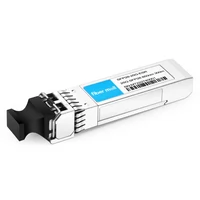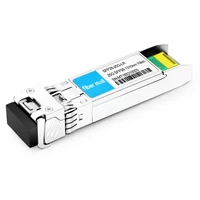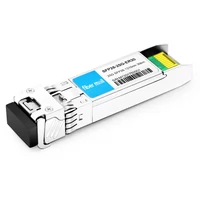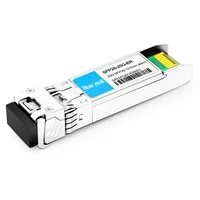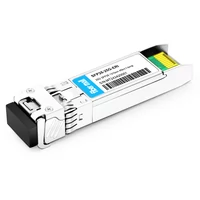Choosing the right transceiver module is important to get the most out of your network performance and scalability needs in the fast-paced world of networking technology. This article will help you understand what sets SFP28 apart from SFP+, giving a thorough understanding that will enable decision-making among IT experts and other professionals involved in managing networks. We are going to do this by looking at things like data rate capabilities and power consumption levels, as well as where each type can work best, among other factors, so that we can show how different these two types actually are intended for various network requirements. Therefore, through this technical comparison, you should be able to gain enough information about selecting and deploying transceivers in complex environments.
Table of Contents
ToggleWhat is an sfp28 Transceiver?
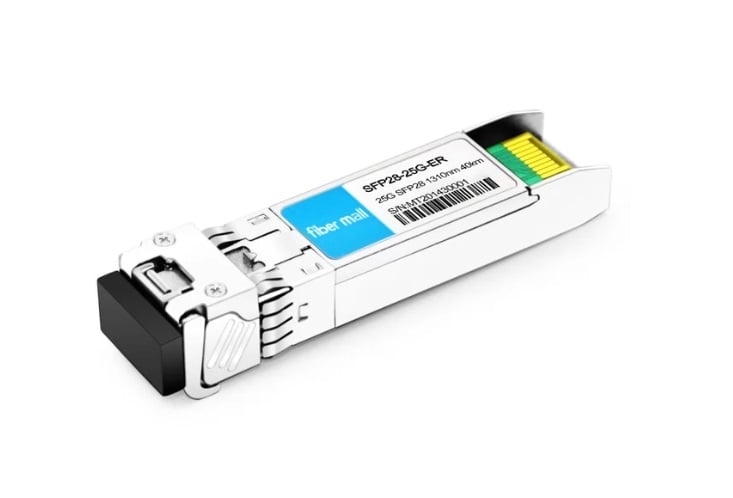
Defining sfp28 Transceiver
The SFP28 transceiver is an interface module for 25 Gbps Ethernet networks. It works at a rate of 28 Gbps, allowing it to support 25 Gigabit Ethernet (25GbE) applications. While based on the same technology as its predecessor, SFP+, this device improves data transmission performance in order to meet the growing bandwidth requirements of today’s data centers and enterprise networks. Moreover, it can be used with backward-compatible SFP+ ports, which means that you will be able to integrate it into your current network infrastructure without any problems and, at the same time, have the possibility of upgrading to higher rates of data transfer.
How does sfp28 compare to sfp?
Regarding data rate capabilities, an SFP28 transceiver is a major improvement over an SFP transceiver. An SFP (Small Form-Factor Pluggable) transceiver generally supports rates up to 1 Gbps, whereas the SFP28 can handle between 25 Gbps and 28 Gbps. With this large increase in channel capacity, SFP28 modules become more suitable for higher-speed networks like current data centers or high-performance enterprise networks where fast connection is required. Another point to consider is that these devices are also more power efficient than previous versions and designed specifically for use in 25 Gigabit Ethernet (25GbE) environments, while standard SFPs were intended for use with Gigabit Ethernet (GbE) applications only.
Advantages of sfp28
An SFP28 transceiver has many benefits that make it an attractive choice for modern networking environments. It supports data rates from 25 to 28 Gbps, which is faster than ever before. This means more bandwidth can be provided in data centers and cloud computing environments where demands are increasing rapidly. Another advantage of SFP28 modules is that they are compatible with older SFP+ ports, too, so there will not be any major changes or additions when integrating them into existing networks. Furthermore, these devices consume less power than other types while still offering the same level of performance, thus greatly reducing operational costs related to energy consumption. Besides this, lower latency allows for real-time processing of information required by various applications involving quick communication links between systems located far apart from each other. In conclusion, the SFP28 standard ensures strong performance, scalability, and future-proofing of network infrastructure.
How does sfp28 compare to sfp+?
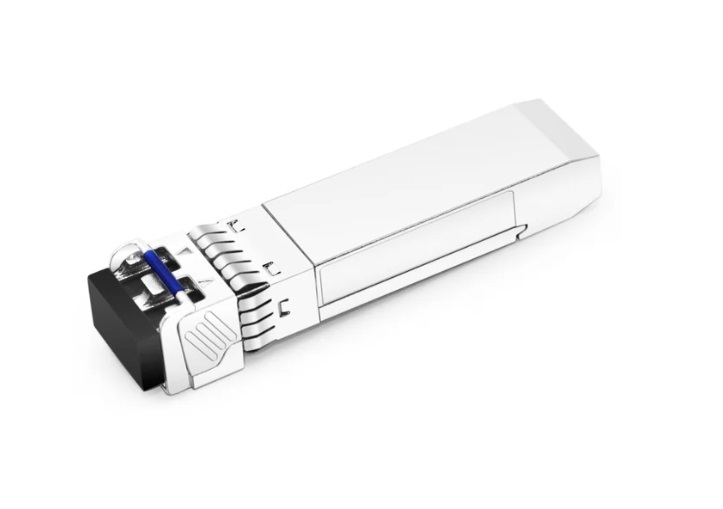
The Technology Behind sfp28
The Small Form-Factor Pluggable 28 (SFP28) transceiver is an improvement on the SFP+ module technology, increasing the data rate from 10 Gbps to 25 Gbps. This progress is made possible by refining signal integrity, improving electronic design, and implementing superior manufacturing processes. Among the major technical improvements of SFP28 is a decrease in crosstalk and electromagnetic interference, which leads to higher data rates and better performance. Such transceivers use advanced modulation techniques, including Pulse Amplitude Modulation 4-level (PAM4), that help send data more efficiently through a similar physical medium. It also has the same mechanical dimensions as SFP+ and SFP form factors, hence ensuring that it can be integrated into existing systems easily without any backward compatibility issues. Additionally, because they consume less power and dissipate more heat effectively, these two features alone significantly enhance reliability while at the same time boosting their overall performance levels, making them perfect candidates for modern network environments where demand forces them to work hard.
Data Rates: 10g vs 25g sfp28
In the context of optical transceivers’ 10G and 25G data rate comparison, SFP28 has some clear benefits. These are centered around the fact that they have more data transmission capacity than SFP+. For every lane, it can support up to 25 Gbps, while SFP+ only offers a maximum of 10 Gbps, which is less than half as much. This wider bandwidth makes it possible to handle information more effectively, leading to better overall network performance. Another thing worth noting is that SFP28 transceivers were designed with improved signal integrity, thus reducing transmission errors and increasing reliability and throughput within networks. Additionally, using PAM4 modulation enables achieving higher data rates without the need for extra physical cabling, thus ensuring scalable infrastructure efficiency. For this reason, they are best suited to serve bandwidth-demanding applications in modern data centers alongside telecommunications systems that require future-proofing.
Compatibility Issues with sfp28
To fix issues with SFP28, it is important to address hardware and software aspects. These transceivers are made for compatibility with SFP+ ports, which enables them to work at 10G speeds in old systems. This is, however, only achievable if the network equipment at the firmware level supports the 25G specification. Compatibility can be ensured by updating firmware and software drivers to versions supplied by the manufacturer of the device, among other methods like ensuring that SFF-8402 MSA specifications, as well as IEEE 802.3 by industry standards, are met by these modules. You should also follow any given guidelines or lists of compatibility that may be specified between switches made by different vendors because some vendors may have more interoperability than others according to their transceivers’ brands. It is, therefore, necessary to do adequate cross-referencing of supported hardware/software versions so as not to expose yourself to possible compatibility challenges posed by sfp28s.
What are the Key Features of sfp28 vs sfp+?
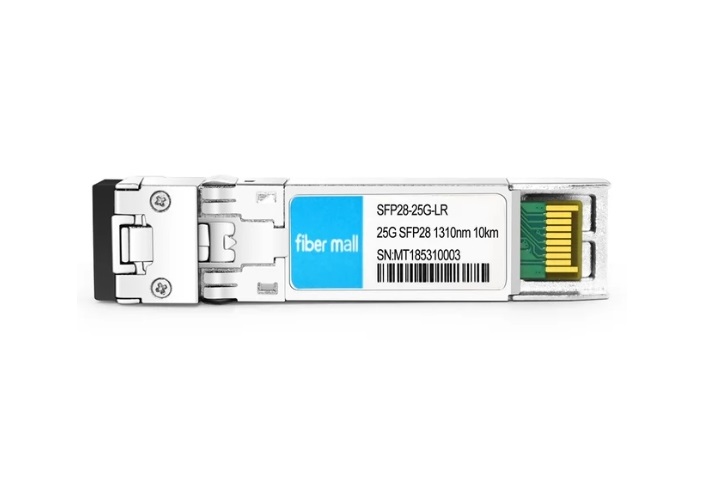
Form Factor and Size and Appearance
SFP28 transceivers, as well as SFP+ transceivers, have the same small form factor, so they can both fit into the same physical slots in networking equipment. This smaller size is very useful for high-density applications where space is at a premium and optimization is key. Both modules also share hot-swappability, meaning that they can be inserted and removed freely without any interruption to network operation, whether in business or industry. They look much alike, too, but this similarity in design was intentional – it allows them to always work with each other regardless of generation or type so long as compatibility mode has been enabled on corresponding devices during the setup stage for ease-of-use purposes while deploying such networks like the ones mentioned above here. However, despite how similar they may appear physically, there are some points worth mentioning about them when talking about SFP28 against SFP+. The former has higher performance levels than the latter because it supports data rates up to 25Gbps, while the latter only does 10Gbps.
Bandwidth Capabilities: 10g vs 25g sfp28
The major difference between SFP+ and SFP28 transceivers is their bandwidth capacity. 10 Gbps Ethernet is the target of SFP+ transceivers, while 25 Gbps Ethernet is supported by SFP28. Therefore, this implies that a significant increase in data rate makes it more appropriate for higher bandwidth-demanding applications like data center interconnects and high-performance computing.
These two transceivers have similarities in their physical interfaces but differ electrically to be able to handle increased data throughput. To accomplish its higher speeds, SFP28 uses a more advanced signaling method, which ensures better network efficiency as well as performance improvement. So, when compared with other modules on the market today, deploying them may lower hardware costs and enhance operational scalability due to wider bandwidth availability.
Compatibility and Interoperability
When assessing compatibility and interoperability between SFP+ and SFP28 transceivers, both physical and data link layers should be taken into account. In terms of physique, these two transceivers have the same size. This means that SFP28 modules can be used in backward compatibility with SFP+ ports. With this type of physical compatibility, an SFP28 transceiver can be connected into an existing slot of an SFP+, thus making it easy to upgrade without having to replace all the network hardware which had already been installed.
However, electrically, they differ; while sfp+ modules are designed for 10Gbps data rates, their sfp28 counterparts are made to support 25Gbps. In other words, if we say that these devices are physically compatible, what we imply is that one can plug them together but only at the expense of losing its full potential speed because it will work as a 10Gbps device than a 25Gbps one unless otherwise, both ends (transceiver and network device) being able to handle such higher data rate like 25 Gigabits per second (Gb/s). This may call for firmware or software updates in order to achieve the best performance levels through interoperability aspects too during the implementation phase, depending on the practicalities involved.
Additionally, these faster signaling methods used by sfp28s offer improved signal integrity with fewer errors, which are necessary when dealing with high-speed transmission needs. Therefore, even though there is ease in deploying due to backward compatibility, users still need to ensure that their network infrastructures can fully utilize enhanced capabilities brought about by sfp28s so as to take advantage of increased bandwidths and performances achieved through these upgraded technologies.
Can I Use sfp28 in an sfp Slot?
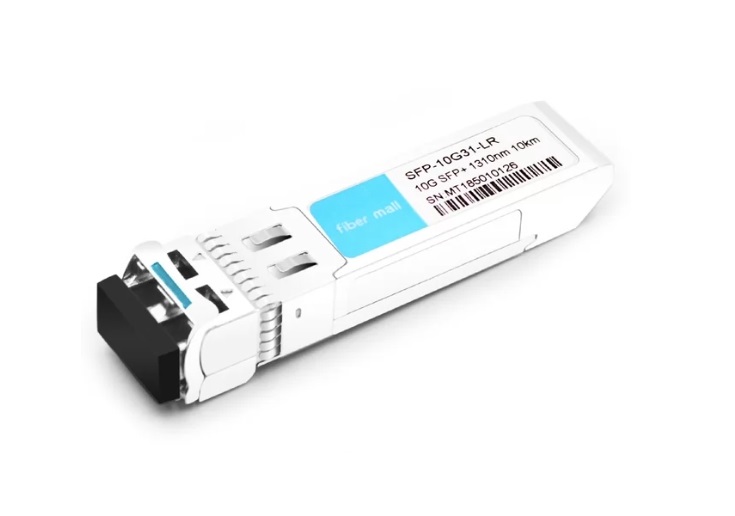
Understanding Compatibility
Is it possible to employ SFP28 transceivers in SFP+ slots? Absolutely, since they have the same form factor, upgrading is easy without having to get rid of any old equipment. However, one should note that an SFP28 transceiver may be physically fit into an SFP+ port but its data rate will only be limited up to 10Gbps as specified for SFP+. Thus, until a network device supports higher data rates, full performance of 25Gbps offered by these modules cannot be achieved. Additionally, firmware/ software updates might need to be done between these devices so they can communicate seamlessly and realize their optimum performance levels according to network administrators’ perspective. All this physical compatibility, together with electrical considerations, is what brings about reliability and desirable functionality on networks.
Using sfp28 transceiver in sfp Slots
The reason why an SFP28 transceiver is possible in an SFP slot is mainly because both transceivers have the same physical form factor. However, this does not come without some considerations. Even though an SFP28 transceiver can be plugged into an SFP+ slot, it will operate at the lower data rate of SFP+, usually 10Gbps rather than the full 25Gbps capability of the former. In other words, it will work with speed limits imposed by that particular port (SFP+). Therefore, for best performance, it is important to check if a network device supports higher data rates and apply any necessary firmware or software upgrades. Likewise, traditional SFP slots do not support such advanced signaling or data rates; hence, using them with SFP28 might result in subpar performance or even incompatibility problems.
Benefits of Reduced Speed Deployment
There are many advantages to deploying transceivers at lower speeds. For one, it makes the network more flexible and versatile. This is achieved by allowing immediate utilization of the current infrastructure without expensive upgrades or replacements, which are cost-effective and time-saving. Secondly, it ensures that new technologies can be seamlessly integrated with legacy systems. This eases the transition process and prevents disruptions within the system. Thirdly, reducing speed during deployment leads to less power consumption as well as heat production. Consequently, networks become greener and more sustainable in their operations, too. Finally, this method gives network managers an extended time frame for planning future enhancements, thus making such improvements strategic and budget-friendly as well.
What Should I Consider When Choosing Between sfp28 and qsfp28?
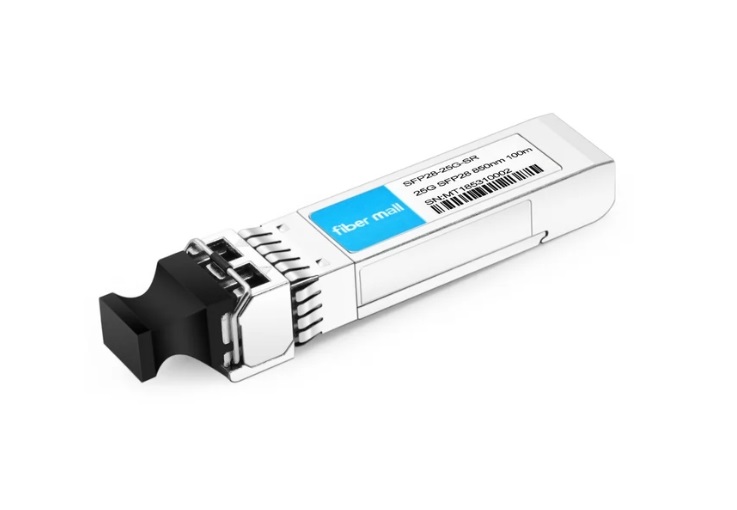
Data Rate Requirements
Data rate requirements are the main factor when deciding between SFP28 and QSFP28 transceivers. SFP28 can reach up to 25Gbps data rate which makes it useful for applications with lower bandwidth. It is cost-effective for edge switches or access layer deployments, where existing infrastructure utilization matters a lot. On the other hand, QSFP28 supports higher data rates of up to 100Gbps, hence making it more suitable for core network switches, data centers, and high-performance computing environments that require large amounts of traffic volume quickly processed through such devices. You need to evaluate your current and future needs on the basis of scalability, cost as well as power consumption while selecting an appropriate transceiver also considering what will be needed in terms of scalability, cost-effectiveness, and power savings in relation to this particular site’s growth over time.
Assessing sfp28 vs qsfp28 Form Factors
While analyzing SFP28 and QSFP28 form factors, it is important to look at such characteristics as physical dimensions, port density, and compatibility with current hardware. Normally, SFP28 modules are smaller in size, which allows for more ports per switch, thereby increasing the density of switch ports, especially where space is a premium, like at edge switches or access layers whose main requirement is to maximize the number of connections available. On the other hand, QSFP28 transceivers achieve higher data rates by using four 25Gbps lanes, each aggregating 100Gbps bandwidths, although they are bigger in size than their counterparts QSPF24. Therefore, this makes them best suited for core switches and data centers where both performance and capacity need priority attention. It also indicates that larger QSFP modules occupy less number of PORTS but have higher aggregate throughput than smaller ones would do, so generally speaking, evaluating these two form factors involves considering how many connections can be made versus what amount of speed should be attained when scaling up one’s network infrastructure.
Deployment Scenarios for qsfp28
QSFP28 transceivers are favored in high-speed networking mainly because they can sustain up to 100Gbps. Their most common use is for data center interconnects, where large amounts of information sharing between servers and storage systems demand wide bandwidths and low latencies. Cloud data centers also utilize QSFP28 widely, which improves connectivity while increasing the throughput capacity needed by cloud computing services.
Within enterprise networks, it serves as a connection point between core switches and aggregation layers so that they can communicate with each other more efficiently within complex network architectures; this aids in faster data processing across different parts of an organization’s infrastructure. Telecom companies, on the other hand, use these devices at their backbone or metro ethernet networks, providing them with strong links that have high capacities supporting mobile and fixed broadband services growth.
All in all, whether or not to deploy a QSFP28 depends on its ability to achieve massive amounts of data per second and its scalability, which makes it perfect for places with performance needs like those mentioned above. Additionally, the fact that it can manage optical signals over long scalable distances effectively implies that this type of transceiver should be used whenever such a need arises.
Reference sources
Frequently Asked Questions (FAQs)
Q: What is the main difference between SFP+ and SFP28 transceivers?
A: SFP28 and SFP+ transceivers are distinguished by their supportable data rate; while the former can handle up to 25 Gbps, the latter only supports a maximum of 10 Gbps.
Q: Can a port with an SFP+ transceiver take in an SFP28 transceiver?
A: Absolutely, an SFP+ port will work with an SFP28 transceiver since they are backward compatible. However, it should be noted that this will limit your data rate to what the older module supports.
Q: How do QSFP28 transceivers compare to those of SFP28?
A: Unlike an SFP28 module, which uses one lane of 25 Gbps for transferring data, a single QSFP28 optical has four lanes, each running at 25 Gbps, resulting in a total bandwidth capacity equaling 100 Gigabits per second, thereby making it more suitable for higher speed applications.
Q: When should I use an SFP28 versus when should I use a QSFP28 transceiver?
A: In scenarios where you require single-lane connectivity at speeds of 25 Gbps such as interconnecting data centres or edge networking environments, then opt for an SPF 28; on other hand if you need four lanes offering up to 100 Gigabit Ethernet capabilities commonly used in high-performance computing (HPC) clusters or core network infrastructure where there’s need for massive bandwidth then choose Q SF P Twenty Eight .
Q: Are backward-compatible sfp+ modules available with sfp28 devices?
A: Yes, sfp twenty-eight gbics usually work alongside previous generations like sfp, but signal rates drop down depending upon what kind of gbic was connected before this more modern version came out, so just keep in mind that if you connect them together, it will operate at lower speeds than what’s possible with the latest technology.
Q: What is an SFP28 DAC and how is it used?
A: Essentially, an SFP28 DAC or Direct Attach Copper cable is a type of high-speed cable used for connecting SFP28 ports, most commonly within or between racks in data centers over short distances.
Q: What does “small form-factor pluggable” mean when referring to SFP transceivers?
A: In this context, the term “small form-factor pluggable” characterizes the compact size and hot-swappable nature of these devices, which can be easily inserted or removed from a network without requiring any downtime.
Q: How does deploying SFP28 transceives optimize network performance?
A: Deploying SFP28 transceives has the potential to optimize network performance since they deliver higher data rates reaching even 25 Gbps to satisfy current bandwidth-hungry networks’ needs.
Q: What differentiates between QSFP and SFP transceivers?
A: Usually, QSFP transceivers may support up to 100 Gbps, while their counterparts can only achieve 10 Gbps. This implies that you would opt for QSFPs where there is a need for higher data rates, whereas SFPS is best suited for low bandwidth requirements
Q: What advantages do single-mode fibers provide over multi-mode ones with regard to using SFP transceivers?
A: When compared to multi-mode fibers, single-mode ones offer longer communication distances, making them perfect for applications such as telecommunications and long-haul data transfer through increased range as well as bandwidth, which they provide.
Related Products:
-
 SFP28-25G-ESR 25G SFP28 ESR 850nm OM3 200m/OM4 300m LC MMF DDM Transceiver Module
$35.00
SFP28-25G-ESR 25G SFP28 ESR 850nm OM3 200m/OM4 300m LC MMF DDM Transceiver Module
$35.00
-
 SFP28-25G-LR 25G SFP28 LR 1310nm 10km LC SMF DDM Transceiver Module
$45.00
SFP28-25G-LR 25G SFP28 LR 1310nm 10km LC SMF DDM Transceiver Module
$45.00
-
 SFP28-25G-ER30 25G SFP28 ER Lite 1310nm 30km LC SMF DDM Transceiver Module
$165.00
SFP28-25G-ER30 25G SFP28 ER Lite 1310nm 30km LC SMF DDM Transceiver Module
$165.00
-
 SFP28-25G-ER 25G SFP28 ER 1310nm 40km LC SMF DDM Transceiver Module
$125.00
SFP28-25G-ER 25G SFP28 ER 1310nm 40km LC SMF DDM Transceiver Module
$125.00
-
 SFP28-25G-ERI 25G SFP28 ER 1310nm 40km LC SMF DDM I-temp Transceiver Module
$360.00
SFP28-25G-ERI 25G SFP28 ER 1310nm 40km LC SMF DDM I-temp Transceiver Module
$360.00

